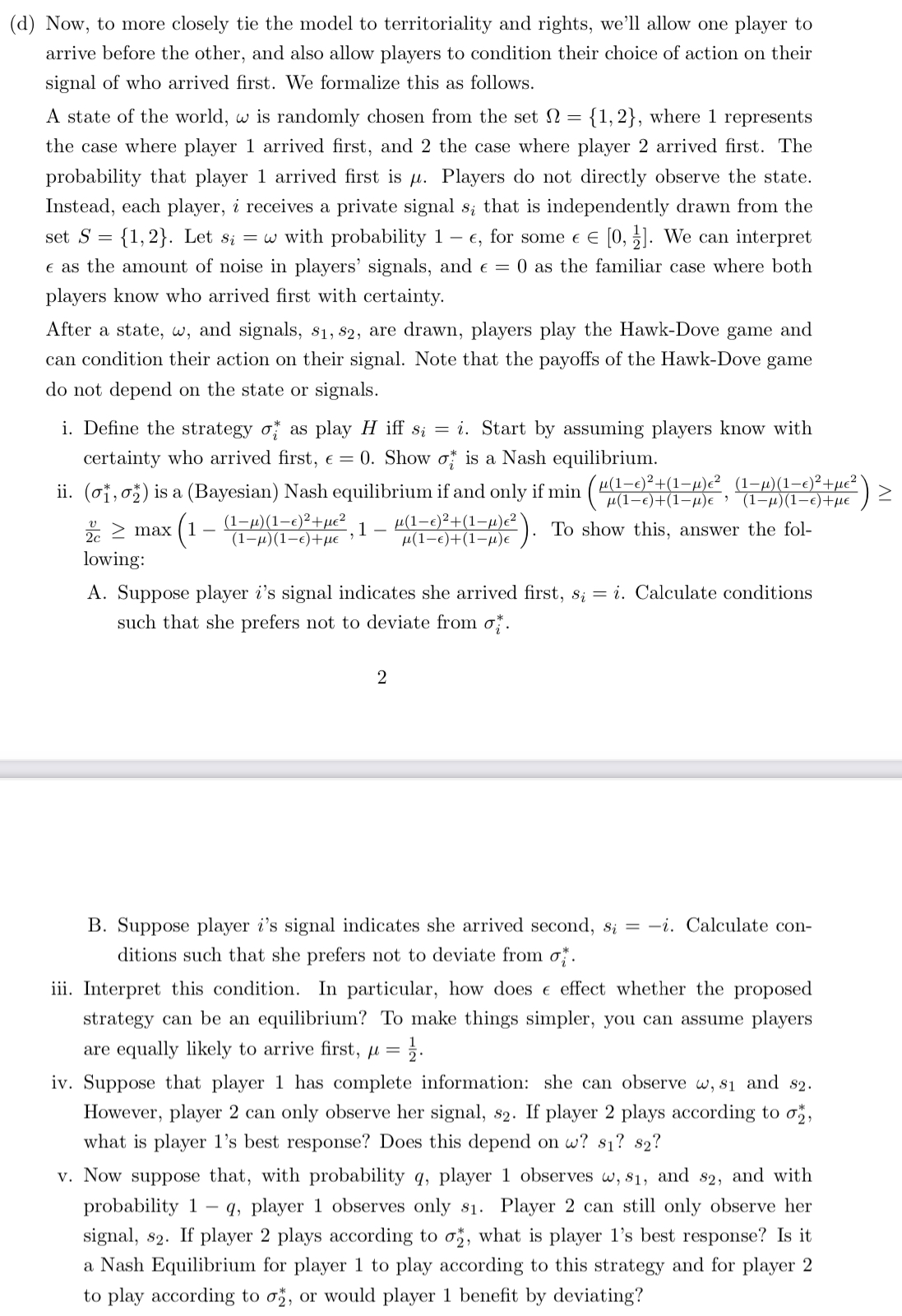Answered step by step
Verified Expert Solution
Question
1 Approved Answer
(d) Now, to more closely tie the model to territoriality and rights, we'll allow one player to arrive before the other, and also allow

(d) Now, to more closely tie the model to territoriality and rights, we'll allow one player to arrive before the other, and also allow players to condition their choice of action on their signal of who arrived first. We formalize this as follows. A state of the world, w is randomly chosen from the set = {1,2}, where 1 represents the case where player 1 arrived first, and 2 the case where player 2 arrived first. The probability that player 1 arrived first is . Players do not directly observe the state. Instead, each player, i receives a private signal s; that is independently drawn from the set S = {1,2}. Let si = w with probability 1 , for some = [0, 1]. We can interpret as the amount of noise in players' signals, and = 0 as the familiar case where both players know who arrived first with certainty. After a state, w, and signals, S1, S2, are drawn, players play the Hawk-Dove game and can condition their action on their signal. Note that the payoffs of the Hawk-Dove game do not depend on the state or signals. i. Define the strategy as play H iff s = i. Start by assuming players know with certainty who arrived first, = 0. Show is a Nash equilibrium. (1-e) + ` ii. (1, 2) is a (Bayesian) Nash equilibrium if and only if min (#(1-0)+(1-1), ((I-H)(1-6) THE max (1 1 - (1-)(1-e)+ (1-)(1-e)+" 1 (1-e)+(1-) (1)+(1) lowing: To show this, answer the fol- A. Suppose player i's signal indicates she arrived first, s = i. Calculate conditions such that she prefers not to deviate from **. 2 B. Suppose player i's signal indicates she arrived second, si = ditions such that she prefers not to deviate from *. -i. Calculate con- iii. Interpret this condition. In particular, how does e effect whether the proposed strategy can be an equilibrium? To make things simpler, you can assume players are equally likely to arrive first, = 1. iv. Suppose that player 1 has complete information: she can observe w, s and 82. However, player 2 can only observe her signal, s2. If player 2 plays according to , what is player 1's best response? Does this depend on w? s? S2? v. Now suppose that, with probability q, player 1 observes w, 81, and s2, and with probability 1 q, player 1 observes only s. Player 2 can still only observe her signal, s2. If player 2 plays according to 2, what is player 1's best response? Is it a Nash Equilibrium for player 1 to play according to this strategy and for player 2 to play according to 2, or would player 1 benefit by deviating?
Step by Step Solution
There are 3 Steps involved in it
Step: 1

Get Instant Access to Expert-Tailored Solutions
See step-by-step solutions with expert insights and AI powered tools for academic success
Step: 2

Step: 3

Ace Your Homework with AI
Get the answers you need in no time with our AI-driven, step-by-step assistance
Get Started


